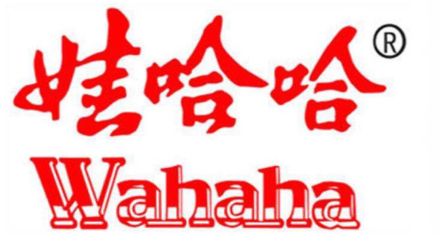The Wahaha Legacy: More Than Just Drinks, A Real Estate Empire
The name “Wahaha” is synonymous with beverages in China. From its iconic bottled water to its flavored milk drinks, the brand is a household name. However, the story of Wahaha extends far beyond the realm of refreshment. This article delves into the multifaceted Wahaha legacy, exploring its significant presence in the real estate sector and demonstrating how the company has diversified beyond its core business, building a substantial empire.
The Rise of Wahaha: From Rural Roots to Beverage Giant
Before exploring its real estate ventures, it’s crucial to understand Wahaha’s origins. Founded in 1987 by Zong Qinghou, the company began as a small school-run business in Hangzhou, China. Zong’s vision, coupled with innovative marketing and a focus on quality, propelled Wahaha to unprecedented success. Its rapid growth and expansion were fueled by:
- Strategic Partnerships: Collaborations with larger companies helped Wahaha gain access to resources and distribution networks.
- Aggressive Marketing Campaigns: Memorable advertising slogans and widespread distribution cemented Wahaha’s brand recognition.
- Focus on Product Innovation: Continuously developing new products to cater to evolving consumer tastes, including the introduction of the popular “Wahaha AD Calcium Milk.”
This rapid growth provided the financial foundation for Wahaha’s subsequent diversification, including its ambitious real estate endeavors.
Wahaha’s Foray into Real Estate: Strategic Diversification
Seeing opportunities beyond the saturated beverage market, Wahaha strategically invested in real estate. This move was driven by several factors:
- Profitability: Real estate offered the potential for significant returns on investment, providing a stable and potentially higher-yielding asset class.
- Diversification: Reducing reliance on a single industry helped mitigate risks and protect against market fluctuations.
- Brand Building: Acquiring prime real estate could enhance the brand’s image and provide opportunities for future expansion.
- Vertical Integration: In some cases, real estate investments were related to Wahaha’s core business, such as warehousing and distribution centers.
Wahaha’s real estate portfolio includes a diverse range of properties, demonstrating a comprehensive investment strategy:
- Commercial Properties: Office buildings, shopping malls, and retail spaces.
- Residential Developments: Apartments and housing complexes, often catering to the growing middle class.
- Industrial Parks: Facilities to support manufacturing and logistics operations.
- Land Acquisition: Holding land for future development, demonstrating a long-term investment perspective.
The Impact of Wahaha’s Real Estate Portfolio
Wahaha’s real estate investments have had a significant impact, both on the company itself and the broader market:
- Financial Performance: Real estate has become a significant contributor to Wahaha’s overall revenue and profitability, providing a cushion against fluctuations in the beverage market.
- Brand Image: Owning and developing prime real estate has bolstered Wahaha’s image as a successful and forward-thinking enterprise.
- Economic Contribution: Wahaha’s real estate projects have created jobs, stimulated local economies, and contributed to urban development.
- Market Influence: Wahaha’s entry into the real estate market has influenced the strategies of other businesses, particularly in the food and beverage industry.
Challenges and Considerations in Wahaha’s Real Estate Ventures
While Wahaha’s real estate ventures have brought significant advantages, they have also presented challenges:
- Market Volatility: The real estate market is subject to fluctuations, which can impact investment returns.
- Competition: Wahaha faces strong competition from established real estate developers with extensive experience.
- Regulatory Environment: Navigating complex regulations and obtaining necessary approvals can be time-consuming and costly.
- Management Expertise: Managing a large real estate portfolio requires specialized skills and expertise, which Wahaha has had to develop.
The Future of the Wahaha Legacy
The future of Wahaha is likely to be shaped by its continued success in the beverage market and its strategic management of its real estate portfolio. The company’s ability to adapt to changing market conditions, innovate, and maintain its strong brand reputation will be crucial. Future trends to watch include:
- Expansion into new markets: Both geographically and in terms of product offerings.
- Investment in sustainable practices: Focusing on environmental responsibility in both beverage production and real estate development.
- Leveraging technology: Utilizing data analytics and digital platforms to optimize operations and improve customer experiences.
- Strategic partnerships: Collaborating with other companies to expand their reach and expertise.
FAQs About Wahaha and Its Real Estate Empire
Here are some frequently asked questions about Wahaha and its real estate ventures:
1. How big is Wahaha’s real estate portfolio?
While the exact size is not always publicly disclosed, Wahaha’s real estate portfolio is substantial, encompassing a variety of commercial, residential, and industrial properties, spread throughout China.
2. Why did Wahaha diversify into real estate?
Wahaha diversified into real estate to increase profitability, reduce reliance on the beverage market, build its brand image, and diversify its revenue streams to mitigate risk.
3. Does Wahaha still focus on its beverage business?
Yes, Wahaha’s core business remains its beverage operations. However, its real estate ventures have become an increasingly important component of its overall success.
4. What are some of the challenges facing Wahaha’s real estate investments?
Challenges include market volatility, competition from established developers, complex regulations, and the need for specialized management expertise.
5. What role did Zong Qinghou play in Wahaha’s real estate expansion?
Zong Qinghou, the founder of Wahaha, played a pivotal role in the company’s strategic diversification into real estate, guiding the company’s overall investment strategy.
Conclusion: A Legacy of Diversification and Resilience
The Wahaha legacy is more than just a collection of beverages; it is a testament to strategic diversification, entrepreneurial vision, and adaptation to a dynamic market. By successfully building a real estate empire alongside its beverage business, Wahaha has demonstrated its resilience and ability to thrive in a competitive environment. As the company continues to evolve, its story serves as an example of how businesses can diversify and build lasting legacies that extend far beyond their initial core product.



